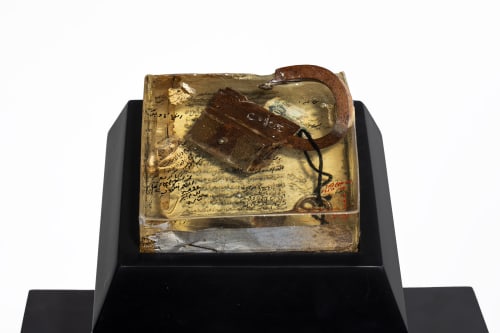The Patience of Ordinary Things
The magnificence of windows is comparable to little else except, say, mirrors – two endeavors of light that are experts in ways of seeing. With sight, we look outwards and with insight, within.
But a single glance is not enough. For realizable impressions, we must look and look again and it is only on looking earnestly and repeatedly that we might discover how our worlds are generously endowed with forms and figures. On looking deeper and longer we might grasp that this population of appearances and resemblances eventually takes on the prowess of images, or charged representations of the ‘thing’ itself. We might also discover how conditioned we are to understanding reality through the effects of it.
In a simple act of storytelling, sculpture emerges from the resonant human urge to engage with the tactility of our senses and create impressions of, and sometimes departures from, subliminal beauty. Much like sculptures, windows and mirrors are material constructions that extend themselves to us as technologies of the self, or what French philosopher Michel Foucault describes as systems of knowledge through which we ultimately learn how to understand ourselves better. This techne of life is itself an art or skill, and a shared concern over the aesthetics of existence in several cultural origin stories of human-kind. Whether Prometheus stole fire from the Gods or fashioned the first man out of clay with Athena’s help, or Manu was born out of the fusion of primordial divinities Brahma and Shatarupa – our apprehension of the world has always been infused with an impulse for creation.
When these instincts are pursued through material consciousness across the art historical, beauty becomes a kind of synecdoche for aesthetics wherein the representation of the ‘thing’ embodies a vaster discourse than the thing itself. The use of the hands arousing tools to give or take away form and space motivates the artist’s exploration of reality through artifice, by engendering a self-reflection among the objects that overwhelm our world. A diverse arrangement of sensorial inputs nurtures an interpretive and alternate existence, one maintained in possibility through the divine ability of creation.
The rituals of sculpture employ a new logic of visual understanding that departs greatly from the practice of painting in art; as fact, objects hold mythologies and power, and as fiction, objects contain narrative layers that transform rules of utility into the stuff of knowledge. The dominance of shapes, textures, colours, smells and tastes that we are offered on even the most banal walk fuel the transformative potential of objects, whose meanings are not inherent or self-possessed but given or implied. And so, a ‘found’ object can blur the distinction between one’s home and an artwork, while a public sculpture can function as a landmark altering henceforth its environment, and technology in contemporary installations is capable of consuming and objectifying a viewer themselves. The sculpture’s endeavor becomes connecting with the imagination as an effect of reality, which is in its most vibrant state a dramaturgical arrangement of our connection to the physical world.
Titled after a poem by American poetess Pat Schneider, The Patience of Ordinary Things is a group exhibition featuring important Indian modernists and post-modernists – Amarnath Sehgal, Bhupen Khakhar, Dhruva Mistry, Gulammohammed Sheikh, Himmat Shah, Krishen Khanna, Mrinalini Mukherjee, Nagji Patel, Rameshwar Broota, Ravinder Reddy, Sadanand Bakre, Sankho Chaudhuri and J. Swaminathan – who undertake experimentations with the sculptural form, creating conversations around the power, mobility and transformation of the image through the energy of objects.



